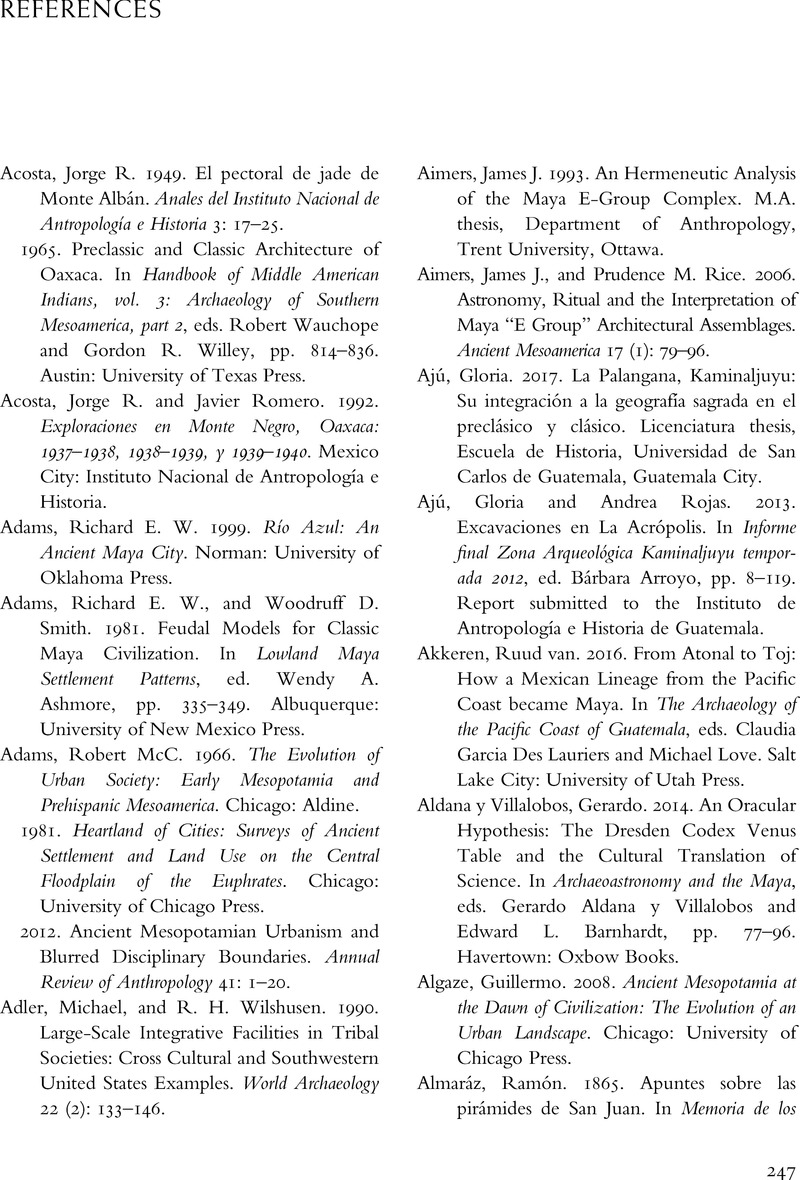Book contents
- Early Mesoamerican Cities
- Early Mesoamerican Cities
- Copyright page
- Contents
- Figures
- Tables
- Contributors
- Acknowledgments
- Chapter One Introduction
- Chapter Two Oaxaca’s Formative Period Cities and Their Implications for Early Urbanism in Mesoamerica
- Chapter Three Early Urbanization in the Formative Gulf Lowlands, Mexico
- Chapter Four Patterns of Early Urbanism in the Southern Maya Lowlands
- Chapter Five The Role of Middle Preclassic Placemaking in the Creation of Late Preclassic Yucatecan Cities
- Chapter Six The City over the City
- Chapter Seven The New Normal
- Chapter Eight The Nature of Early Urbanism at Teotihuacan
- Chapter Nine Art and Urbanity in Late Formative Mesoamerica
- Chapter Ten Landscape and Leadership in Mesoamerican Cities
- Chapter Eleven Experimental Cities?
- References
- Index
- References
References
Published online by Cambridge University Press: 23 December 2021
- Early Mesoamerican Cities
- Early Mesoamerican Cities
- Copyright page
- Contents
- Figures
- Tables
- Contributors
- Acknowledgments
- Chapter One Introduction
- Chapter Two Oaxaca’s Formative Period Cities and Their Implications for Early Urbanism in Mesoamerica
- Chapter Three Early Urbanization in the Formative Gulf Lowlands, Mexico
- Chapter Four Patterns of Early Urbanism in the Southern Maya Lowlands
- Chapter Five The Role of Middle Preclassic Placemaking in the Creation of Late Preclassic Yucatecan Cities
- Chapter Six The City over the City
- Chapter Seven The New Normal
- Chapter Eight The Nature of Early Urbanism at Teotihuacan
- Chapter Nine Art and Urbanity in Late Formative Mesoamerica
- Chapter Ten Landscape and Leadership in Mesoamerican Cities
- Chapter Eleven Experimental Cities?
- References
- Index
- References
Summary

- Type
- Chapter
- Information
- Early Mesoamerican CitiesUrbanism and Urbanization in the Formative Period, pp. 247 - 296Publisher: Cambridge University PressPrint publication year: 2022



